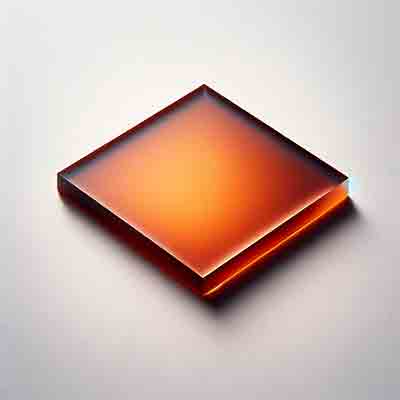THz-Quality Zinc Telluride (ZnTe) Wafers
A scientist researching terahertz photonics requested the following quote:
Please quote the following:
ZnTe 5×5×3.5 mm, (110), 1 side polished 60/40, THz-quality
ZnTe 5mm×5mm x 20microns, (110), 2 side polished 60/40, glued on a 5×5×3.5
mm, (100) THz-quality 2 side polished
Reference #92115 for specs and pricing.
Get Your Quote FAST! Or, Buy Online and Start Researching Today!
ZnTe Optical Filter for Fluorescence Contact Imaging
A scientists contacted us to use ZnTe wafer as an optical filter for fluorescence contact imaging. Requirements: ZnTe, any orientation, undoped, 2sp, <=0.5mm thick.
5x5mm later dimensions would work. Are the wafers that are less than 0.5mm thick fabricated on a substrate such as fused silica or do they? We would like the thinnest you normally fabricate or have in stock. I see you have done down to 0.1mm thick in the past.
Cost estimate? Lead time?
UniversityWafer, Inc. Quoted:
ZnTe, (110), 5x5x0.5 mm
ZnTe, (110), 5x5x0.3 mm
ZnTe, (110), 6x6x0.2 mm
ZnTe, (110), 5x5x0.15 mm
All plates are free-standing, i.e., are not glued to the support plates.
Warning: ZnTe contains microbubbles (see photo below), we don't regard bubbles as a ground for the complaint.

What is Zinc Telluride?
Whether it's used in solar cells, as a background layer, or as a semiconductor, zinc telluride has many uses. The compound's cubic intrinsic crystal structure enables it to grow on many different semiconductors. When refined by sublimation, zinc telluride crystals have a ruby red hue. The substance also burns in the presence of oxygen. Despite its small size, zinc telluride has numerous uses.
The compound's cubic intrinsic crystal structure enables it to grow on many different semiconductors. When refined by sublimation, zinc telluride crystals have a ruby red hue. The substance also burns in the presence of oxygen. Despite its small size, zinc telluride has numerous uses.
The metal is a relatively fair conductor of electricity and burns in the air in the form of a white cloud of oxide. It's mined from sulfidic ore deposits and is the 24th most abundant element in the earth's crust. The word zinc comes from the German word "zin", meaning "tin".
ZnTe Single Crystal Substrates
10x10x0.5mm undoped N- type (110) DSP
1x1x1.0mm undoped N-type (110) DSP
10x10x1.0mm undoped P-type (100) SSP scratch/dig 60/40
10x10x0.5mm (100) N-type DSP
10x10x0.5mm Random orientation N-type DSP
10x10x0.5mm undoped P-type (100) DSP
10x10x0.5mm undoped P-type (100) DSP
10x10x1.0mm undoped N-type (110) DSP
10x10x1.0mm undoped N-type (110) DSP
ZnTe(110) with Dielectric Mirror Coating
R> 98% @ 1550+/- 50 nm, AOI=0 deg size: 1x1x0.5mm DSP
R> 98% @ 1550+/- 50 nm, AOI=0 deg size: 1x1x0.5mm DSP
A crystal of such material is subjected to a high-intensity light pulse of subpicosecond duration, it emits a pulse of terahertz frequency through a nonlinear optical process called optical rectification. Conversely, subjecting a zinc telluride crystal to terahertz radiation causes it to show optical birefringence and change the polarization of a transmitting light, making it an electro-optic detector. Zinc telluride, "ZnTe", is a non-linear optical photorefractive material of possible use in the protection of sensors at visible wavelengths. ZnTe optical limiters are light and compact, without complicated optics of conventional limiters. ZnTe can block a high-intensity jamming beam from a laser dazzler, while still passing the lower-intensity image of the observed scene. It can also be used in holographic interferometry, in reconfigurable optical interconnections, and in laser optical phase conjugation devices. It offers superior photorefractive performance at wavelengths between 600–1300 nm, in comparison with other III-V and II-VI compound semiconductors.


 The compound's cubic intrinsic crystal structure enables it to grow on many different
The compound's cubic intrinsic crystal structure enables it to grow on many different